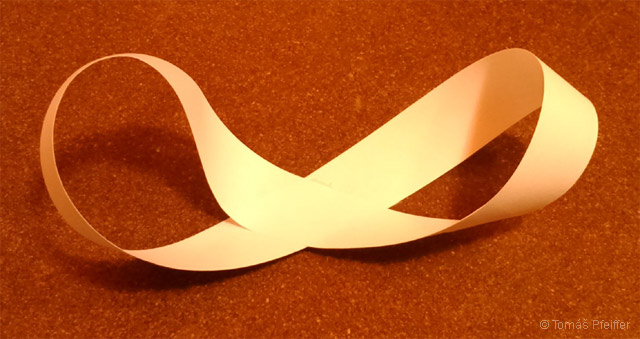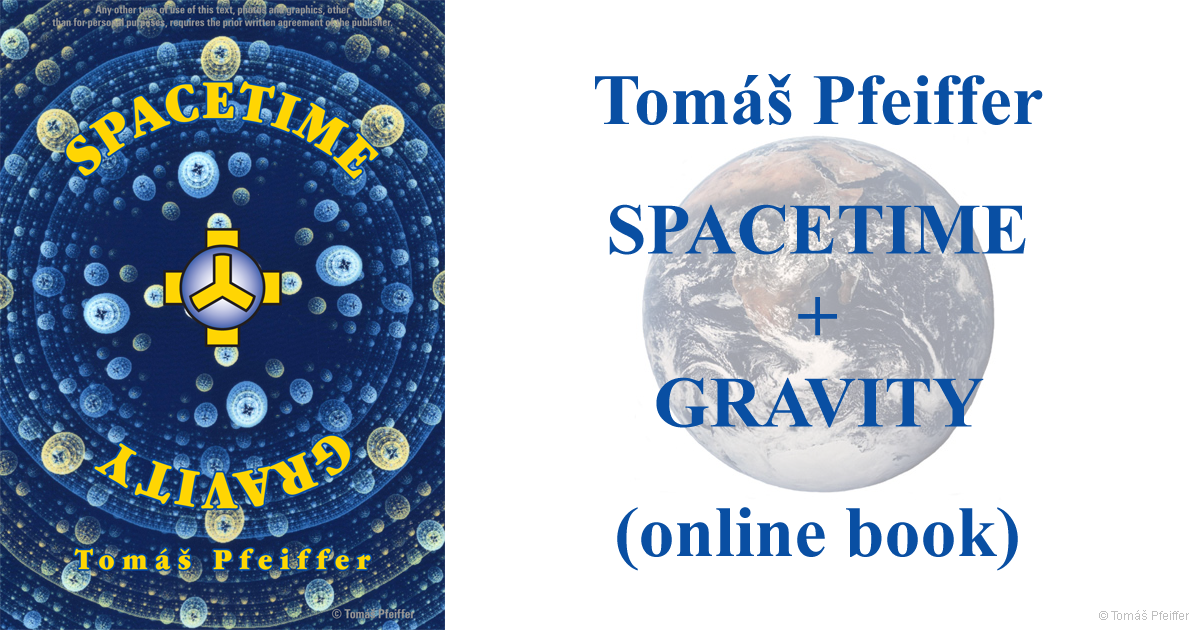INTERSECTION
OF THREE- AND FOUR-DIMENSIONAL SPACES
The Möbius strip, a spatial symbol, will best serve to understand this problem. The Möbius strip is made by giving a strip of paper a 180 degree twist, followed by joining the ends together. The resulting shape has only one surface and one edge. It demonstrates infinity in our seemingly finite three-dimensional space that originates from dividing the zero point into duality. Thus, the duality is inherently included in anything that exists in spacetime, and the duality is the condition for observing spacetime in time, as specified by Zezulka’s Creative Four.

Figure 14 – A classic depiction of the Möbius strip
In the interpretation of anything we always find ourselves in between two boundaries – poles of given regularity (event), whatever the area of concern. All that which is left is like that which is right, and all that which is above is like that which is below. On the other hand, looking into the universe in all directions, one will always be able to see only ca. 14 billion light-years away, as if the universe originated at the observer’s location, which is certainly not true because it is infinite. This is where applies the horizon of cognition, caused by the curved space. It is not possible to see any farther; just as the speed of light is not perceptible beyond its limit and is considered final, so the equation E = mc2 unknowingly ignores the existence of the horizon of cognition, and so forth. Heisenberg’s uncertainty principle as well as Einstein’s theory of relativity in physics is therefore both the direct consequence and proof of the existence of the horizon of cognition.
Understanding this law makes it possible to create a unified field theory. The horizon of cognition also concerns, for instance, the frequency of the electromagnetic field, biological field, as well as any other quantity we want to include integrated into this unified field theory. Understanding the horizon of cognition also opens a new opportunity to travel in time and space, and hence forms a bridge between three- and four-dimensional spaces.
It can be justified that multidimensional spaces are always included in the four-dimensional space which is final in relation to infinity. This accurately describes the very essence of fractal geometry.

